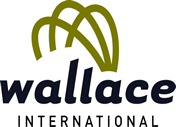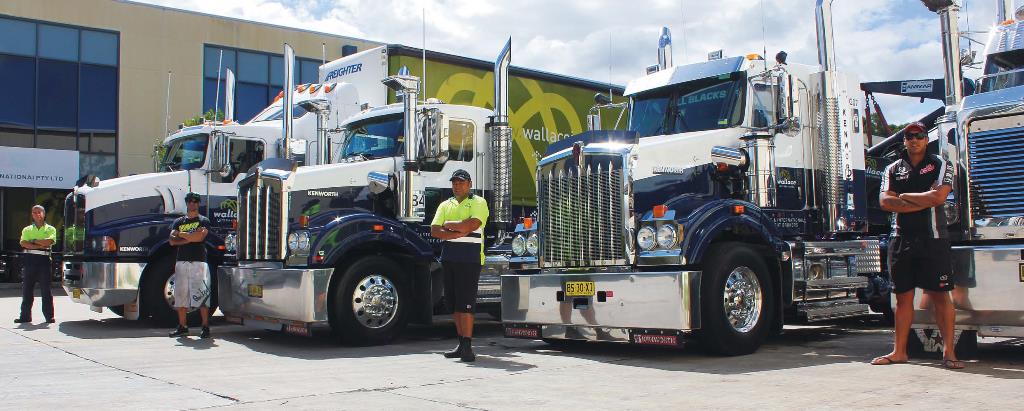
primemovermag.com.au
April 2013
Wallace International has set itself apart by offering its clientele an integrated solution to both import and export needs, with wharf-to-door deliveries using a fleet of specialised trucks that definitely stand out. Peter Shields spent some time surrounded by the polished paint, alloy and chrome to find out more.
For many years, big international freight companies based overseas have contracted customs brokerage and landside freight tasks to smaller, locally based operations. As their presence in Australia increased, it became evident that many were reluctant to manage their own assets – including trucks.
Bob Wallace saw this as an opportunity to set his business apart. Over the past 32 years, Bob has integrated the transport operation into his customs and freight forwarding business, enabling him to provide clients with services that encompass everything from picking up the goods at an overseas location to delivering it directly to the customer’s warehouse here in Australia.
Starting out as a customs broker in Brisbane, Bob made his first acquisition outside of the city around the year 2000, when he purchased a customs brokerage company based in Sydney. The business was relocated to the premises now occupied by Wallace International in the suburb of Rockdale in Sydney, close to the airport and wharf facilities. Bob saw the opportunity for growth in the business and set out to acquire his own warehouses and develop the trucking side of the operation.
“That’s where we have been a bit different,” says Josh Mikkelsen, Wallace International’s Trade Development and Project Logistics Manager. “We have our own trucks and we have the control to deliver when we need to. We also employ our own permanent drivers, not sub-contractors that are coming and going all the time. That gives us quite a competitive edge in the marketplace.”
Bob had been previously involved in a multinational company. While several multinationals were already established in Australia, complete with large warehouses, Bob knew that for Wallace International to be competitive in this market, the company had to develop similar warehouse facilities in the major ports of Brisbane, Sydney, Melbourne and Perth.
In Sydney and Melbourne most of the freight work involves full containers that arrive by sea. The Perth and Brisbane operations handle a larger proportion of airfreight but the majority still comes via ship.
Warehousing and road transport complement the import and export operations and are areas of business that are expected to continue to grow. The introduction of warehouse features such as barcodes and flexible racking systems keeps Wallace International at the leading edge of modern logistics technology.
“We tend to set up the warehouses to suit our clients’ needs. We are especially known throughout the country in the food importing area and we handle a lot of coffee, as well as raw food ingredients and of course finished food products,” Josh explains.
Wallace International is a member of the World Freight Group, which is an alliance of independent freight forwarding agents with 380 offices throughout the world.
“If I’ve got something I need picked up in France, we will email a member agent over there and request that they obtain some quotes,” Josh notes. “From here, they’ll arrange the pickup from the supplier, transport it to the wharf, before organising for it come to Australia. We’ll then pick it up from the wharf with our own truck, handle the customs clearing and then deliver it to the client.
“The system works both ways too – we can pick up the goods with our trucks from an Australian exporter, help with the regulatory paperwork and get it to the wharf or the air freight terminal for them.”
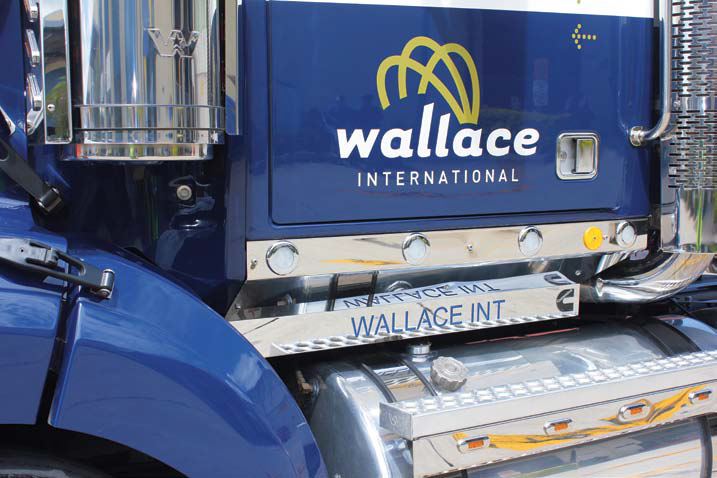 Gary Perry is the Fleet Manager at Wallace International and started as a driver with the company 14 years ago in Brisbane and subsequently moved to Sydney to establish the initial road transport division. Gary admits that he is fussy about how the company’s trucks look and consults with drivers when a new one is being ordered, not just on the mechanical specifications, but regarding the extra pieces of shiny trim that elevate the Wallace trucks to more than just workhorses.
Gary Perry is the Fleet Manager at Wallace International and started as a driver with the company 14 years ago in Brisbane and subsequently moved to Sydney to establish the initial road transport division. Gary admits that he is fussy about how the company’s trucks look and consults with drivers when a new one is being ordered, not just on the mechanical specifications, but regarding the extra pieces of shiny trim that elevate the Wallace trucks to more than just workhorses.
“We consult them from the outset and that means that they all respect the equipment as if it were their own. Every driver will grab a rag and polish their truck, often in their own time afterhours when everyone’s gone home.”
Obviously a devotee of American trucks, Gary regards Kenworth and Western Star as good-looking brands that people recognise. “No one knew us when we had a couple of the more basic white trucks, but as soon as we got the Kenworths, we got phone calls from people who commented on how courteous our drivers were in relation to things such as lane changing.”
According to Gary, staff turnover has been very low over the years with drivers appreciating the opportunity to work for a solid company that’s fair, reasonable and just a good place to work. Another benefit of this stability is that the drivers get to know the customers’ sites and what they like done and when they want their deliveries.
“We used to get casuals, but it cost too much in damages. Now I’ll drive the truck myself when its regular driver is on holidays,” he says.
Wallace International strongly believes in the one driver-one truck credo and the proof is in the enthusiasm and professionalism of their staff.
It was Gary’s idea to sign-write a list of Wallace’s services on the rear doors of the company’s curtain-siders. “Our trucks are our billboards and we are fortunate to have a good crew. Even drivers who have been here seven or eight years are still happy when they turn up to work,” he adds.
The five prime movers based in Sydney are powered by a variety of Cat and Cummins engines ranging between 550 and 615 horsepower and all are backed up with 18-speed manual transmissions. Gary says the reason for the mixed fleet of Kenworth and Western Star is due to what was available in short delivery times. He adds that a good deal can usually be negotiated on a truck that a dealer has in stock.
Mechanical reliability is important in all trucks, but the nature of wharf work makes this doubly crucial because of the system of penalties employed if a truck arrives late for its allotted loading time slot. Wallace won’t even run retreads in order to reduce the risk of being delayed by tyre problems.
“Slots are like gold. We can get penalised for turning up more than five minutes late and have to re-book even if something like a delay on the M5 affects us,” Gary says.
The prime movers may only average 500 kilometres per day, though container work can often be demanding as they are usually running at maximum weight and encounter Sydney’s notorious stop-start traffic conditions.
Wallace International doesn’t just restrict its services to the metropolitan areas. Trips to regional NSW are becoming more frequent as clients realise that Wallace International can deliver their containers to centres such as Canberra, Broken Hill and Parkes. One of the sleeper cab equipped trucks is used for those regional jobs and the occasional interstate run to Brisbane.
The Sydney operation utilises two Hammar side loaders, while a third is on order. Gary likes the reliability of the Hammar units with their extra reach, indicating that they are also lighter than some of the others available.
Freighter is the trailer brand of choice both for curtain-siders and the company’s single and B-double skels.
Isuzu is the brand that dominates the company’s fleet of rigid 14 tonne curtain-siders. There are six based out of each of the Brisbane and Perth warehouses, while Sydney is currently being catered for by a new 295HP FVL, which replaced an eight-year-old Isuzu that had proven its reliability. An additional new Isuzu is about to be added to the Sydney fleet.
“Not only is Isuzu very reliable, but they are miles ahead for comfort. Features like the reverse camera make it a beautiful truck to drive,” Gary positively notes.
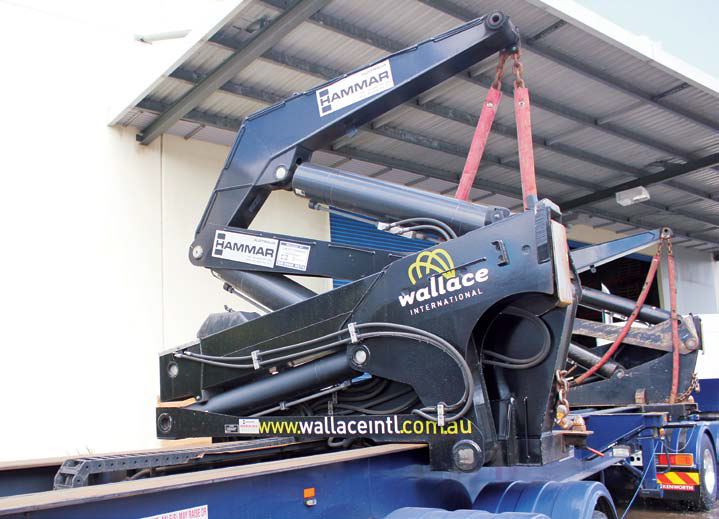 Josh comments that although the landside operations at the Port of Sydney had improved considerably in recent years, trucks involved in collecting and delivering containers still had some challenges to overcome. He says that overweight and poorly packed containers can create axle weight problems despite Wallace International having mass management accreditation. “If the weight is more to one end we can spin the box to put the weight over the right axles but occasionally a container will require repacking at the shipper’s expense,” Josh says.
Josh comments that although the landside operations at the Port of Sydney had improved considerably in recent years, trucks involved in collecting and delivering containers still had some challenges to overcome. He says that overweight and poorly packed containers can create axle weight problems despite Wallace International having mass management accreditation. “If the weight is more to one end we can spin the box to put the weight over the right axles but occasionally a container will require repacking at the shipper’s expense,” Josh says.
In addition, many clients may not have the area or the facilities to unpack a container so Wallace International can provide a service that keeps their customers’ overheads down.
Josh cites an example: “We have a customer out in the suburbs that we have been looking after for only four months. Their imported goods are palletised within the containers. We asked if they had any problem with us unpacking them and sending them up on a curtain-sider. Their response was that it was a good idea and revealed that they didn’t like having a side loader at their premises anyway. Plus, their previous carrier used to take three days to pick up the empty container and it was in their way.”
In the end, Wallace’s staff took the pallets out of the container, customs cleared them and put them straight onto a curtain-sider for delivery to the client, thus creating a better outcome for every party involved.
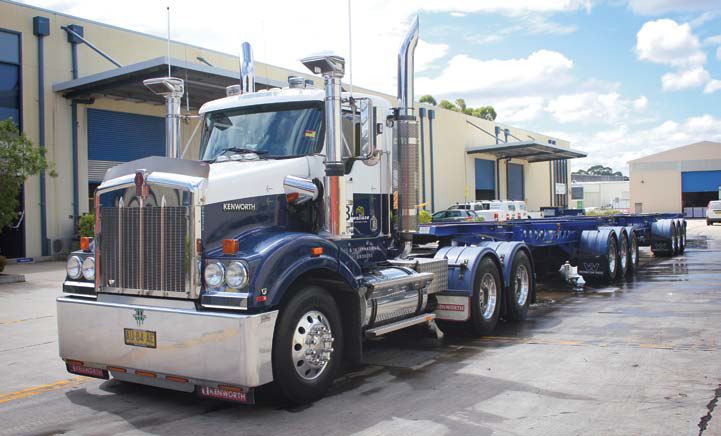 Wallace International also performs transport tasks for other freight forwarders who don’t have trucks or a warehouse infrastructure of their own. For the smaller operators it would be too expensive to maintain a facility and fleet like Wallace’s. This can lead to empty containers being returned much more quickly to the relevant container parks.
Wallace International also performs transport tasks for other freight forwarders who don’t have trucks or a warehouse infrastructure of their own. For the smaller operators it would be too expensive to maintain a facility and fleet like Wallace’s. This can lead to empty containers being returned much more quickly to the relevant container parks.
Wallace International is still owned by the original foundation Director, Robert Wallace, who still oversees the day-today operation of the company nationally from Brisbane. The company now has more than 85 staff, 15 of which are current and active licensed customs brokers with AQIS accreditation.
“You need a good customs broker on your side for things such as tariff concessions on certain goods. Freight forwarding will be a growth area especially via the World Trade Group. Both parts of the business make warehousing and trucking what they are,” Josh says.
As the Australian economy continues to rely upon the import and export sectors, there will be no shortage of work for a vertically integrated company such as Wallace International. “Export is an area that we’d like to get stronger in and it also suits our truck division. We are already particularly strong in exports in Brisbane and aim to increase our export work in other major city offices,” Josh concludes.
